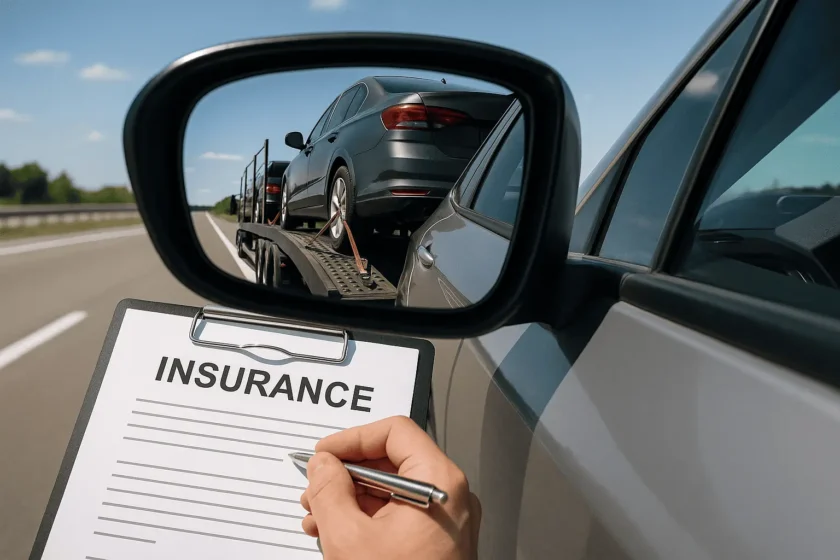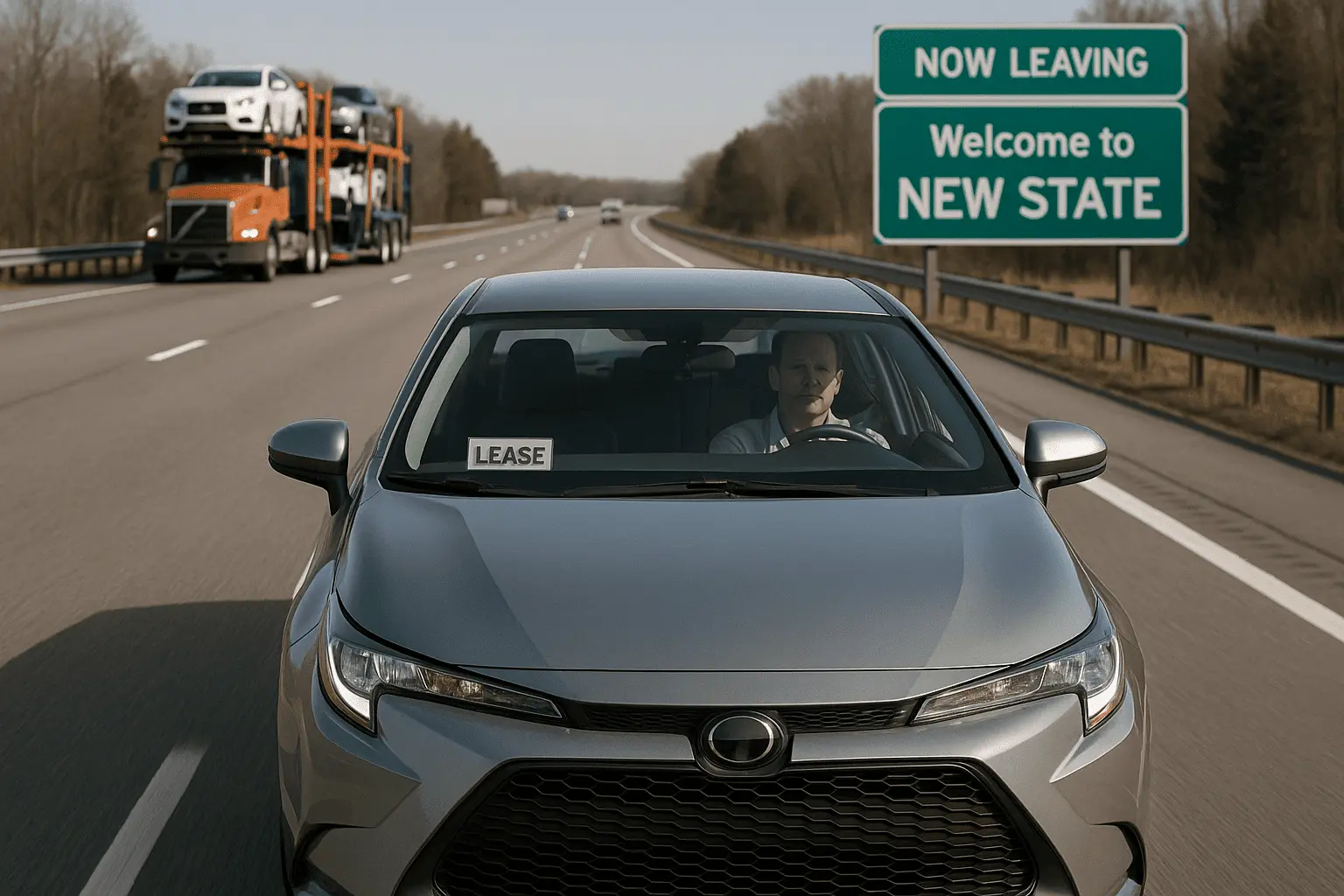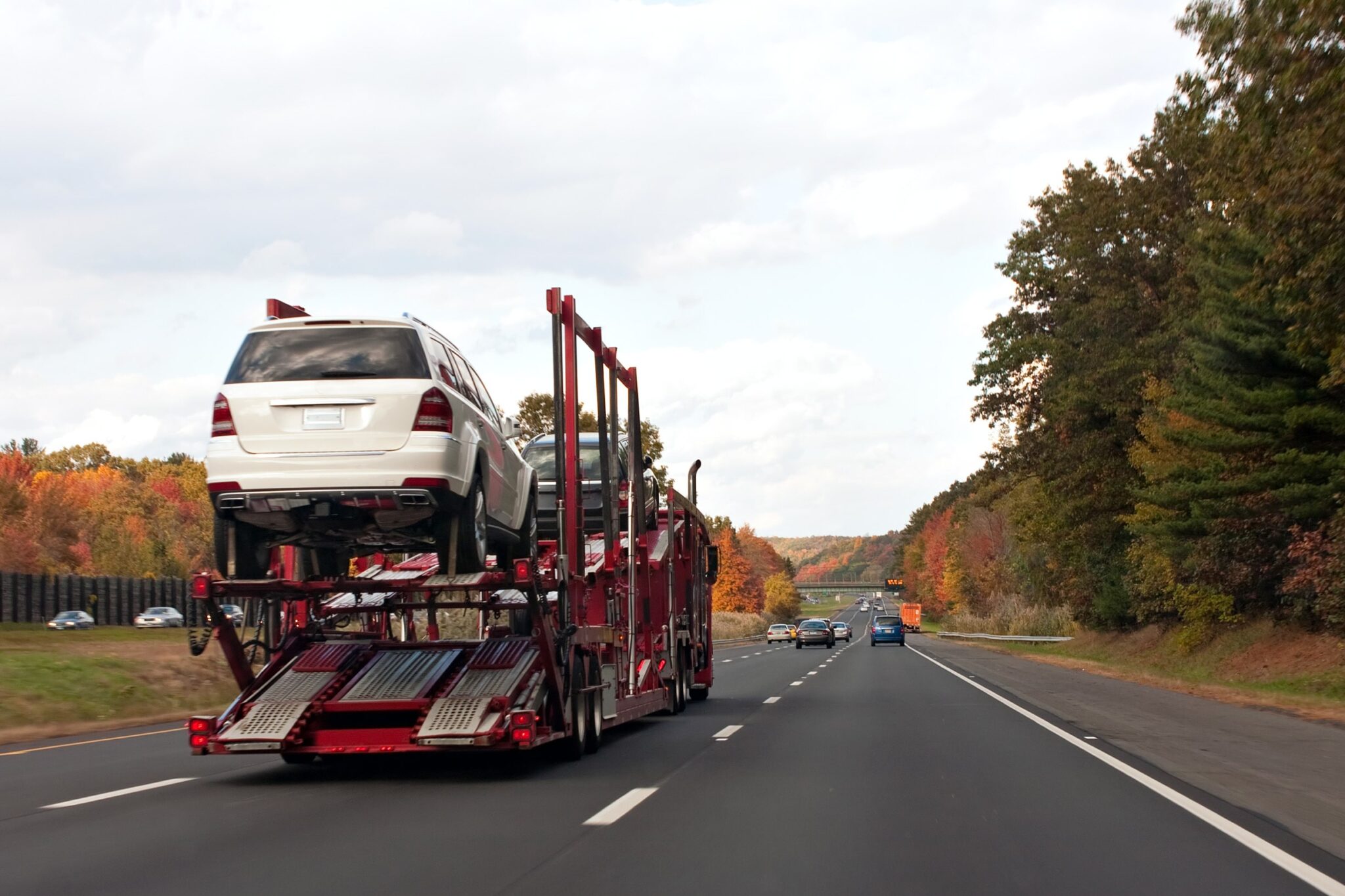Shipping a car can feel like handing over your most prized possession to a stranger. So, whether you’re selling your car, moving across the country, or sending your car to a relative, it’s normal to want car shipping insurance for that added layer of protection.
Key Takeaways
- Insurance carried by the transporter is required, but may not cover everything. Only liability insurance is mandated under federal law for auto shippers, and it may only cover third-party damage not full protection of your vehicle.
- Consider supplemental coverage for high-value vehicles. If you’re transporting a new car, classic car, or a high-value model, the minimum required coverage may be insufficient, so an added policy is wise.
- Different types of coverage serve different risks. Carrier liability covers the transporter’s negligence. Cargo insurance covers damage to your vehicle; enclosed transport and gap coverage fill further gaps.
- Know what’s not covered by standard transport insurance. Pre-existing damage, personal items in the car, wear and tear, weather damage, and mechanical breakdowns generally aren’t covered.
- Verify and document thoroughly. Before shipping, ask to see the carrier’s Certificate of Insurance, photograph your vehicle’s condition at pickup and delivery, and know the fine print, this safeguards your claim rights.
Do You Need Insurance to Ship a Car?
No, your own car insurance is not required if you don’t drive the car by yourself. According to federal law, auto transport companies are required to carry liability coverage. This protects against certain types of damage that may occur while your car is in their care. But, and this is important, that basic coverage is designed for third-party damages, not always your actual vehicle.
So what does that mean for you? Well, if you’re shipping a brand-new car, something expensive, or perhaps a classic you’ve been keeping for years, that minimum insurance might not be enough to protect your vehicle if something goes wrong.
Industry data indicate that fewer than 5% of cars are damaged during shipping. And, when they are, most of the damage is minor, like paint chips or scratches. Still, when it’s your car, those good odds can feel much bigger.
That’s why supplemental coverage might be worth considering, especially for higher-value vehicles. You can think of it as buying a little peace worth thousands of dollars.
Types of Car Shipping Insurance Coverage
Not all vehicle transport damage insurance is the same. Here are the main types you’ll find:
- Liability Insurance (Mandatory): All licensed carriers are required to carry this type of insurance. It covers damage caused by the transporter’s negligence, but may not fully cover your car. This is paid by a car transport company
- Cargo Insurance: This is what you can optionally obtain. It covers actual damage to your vehicle during loading, transport, and unloading. Many carriers carry cargo coverage from $100,000 to several million dollars, depending on the type of transport.
- Open vs. Enclosed Transport Coverage: Open carriers are generally less expensive and typically covered for up to $150,000. Enclosed carriers, used for high-value cars, may have limits up to $3 million.
- Supplemental or Gap Coverage: Some brokers or third-party insurers offer additional policies to fill in the gaps. This can cover deductibles or damage excluded from the carrier’s policy.
- Your Auto Insurance: In some cases, your auto insurer may cover a vehicle in transit. Always call your provider before shipping to see if this applies.
You may want to evaluate each type for its pros and cons carefully and select which types best suit you.
What Is Not Covered in Auto Transport Insurance
Here’s where many car owners get caught off guard. Standard auto transport insurance does not cover:
- Pre-existing dents, scratches, or mechanical issues.
- Personal items left in the vehicle.
- Wear and tear from long-distance travel (like minor dirt or dust).
- Weather damage (hail or flooding) unless specifically listed.
- Mechanical breakdowns are not related to the transport process.
So do a thorough inspection before the car is picked up. Photograph every side, wheel, and corner of the vehicle. When the car is delivered, inspect it again before signing the bill of lading (BOL). If you sign without noting new damage, you’ll weaken your ability to file a claim.
How Much Does Car Shipping Insurance Cost?
The auto transport insurance cost usually depends on three things: what your car is worth, how far it’s going, and how much coverage you want to add on.
If you go with standalone insurance, you’re looking at about 1.5% to 2.5% of your car’s value. So for a $30,000 car, that’s $450 to $750.
For full coverage policies, the premiums range from $300 to $2,000, depending on the risk assessment of the insurance company regarding your situation.
Keep in mind that this does not include the actual shipping cost itself, which can range from $0.53 to $2.30 per mile. Your overall cost will depend on how far you’re going, the current gas prices, and whether you want your car to ride in style in an enclosed trailer or rough it on an open carrier.
For a quick estimate of your overall shipping cost, including optional coverage, you can use a car shipping quote calculator.
Tips for Choosing the Right Coverage
Choosing the right coverage is key, so to help ease the decision process, here are some tips to consider:
- Request proof: Ask to see the carrier’s Certificate of Insurance and verify the coverage limits.
- Match coverage to car value: Enclosing shipping may cost more, but it is essential if you are shipping a luxury, rare, or vintage car.
- Take photos: Photograph every part of your car to verify its condition before pickup and after delivery.
- Read the fine print: It is essential to review exclusions, deductibles, and claim procedures carefully.
- Understand the paperwork: Review the required documents before shipping to avoid making any costly errors along the way.
- Know the process: The auto transportation process can be a long one, and it’s best to first learn about it before proceeding with any shipments. Especially to determine where insurance is best for you.
Think about car shipping insurance as a safeguard for your peace of mind. Yes, the majority of cars arrive undamaged, but mishaps can still happen. But you won’t have to pay for it if you have the proper coverage.
So, before shipping, make sure you invest in proper coverage for your vehicle. Keeping it safe from pickup to delivery is the goal, regardless of the carrier’s cargo insurance or additional coverage you use. Your car is valuable, so protecting it is not an option.
Frequently Asked Questions
Can I Ship a Car Without Insurance?
Yes, you can, if you are not driving your car yourself. Liability coverage is mandatory for car hauling companies, which is carried by them. However, it might not provide complete protection for your vehicle. So, you can have an additional coverage if your car is valuable.
What to Do If the Car Is Damaged During Transport?
Examine it right away after delivery. Before signing, take pictures and compare them to your pre-shipping photos, noting any discrepancies on the Bill of Lading. Next, submit a claim to the insurer on behalf of the carrier. Maintaining accurate documentation could make the process quicker.
What Are Auto Transport Insurance Requirements?
The U.S. Department of Transportation (USDOT) requires licensed carriers to carry liability insurance. Most reputable carriers also include cargo insurance. Brokers, however, are not required to have insurance themselves, so always ask who’s covering the vehicle during transit.
Sources
- Federal Motor Carrier Safety Administration. “Insurance Filing Requirements Chart”, Accessed November 4, 2025.
- FMCSA. “Minimum Levels of Financial Responsibility (Part 387.”, Accessed November 4, 2025.






